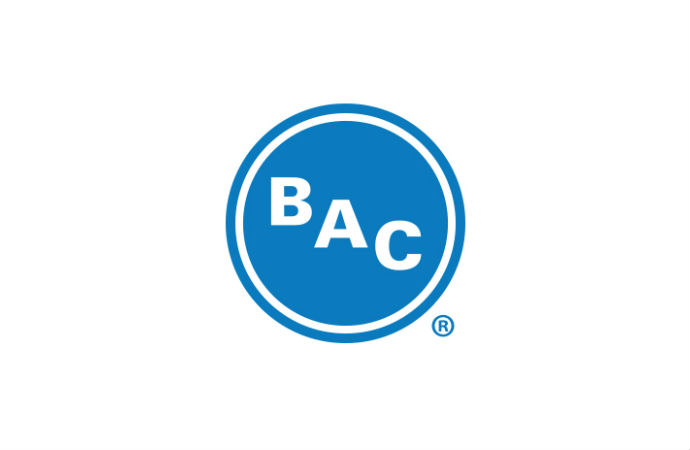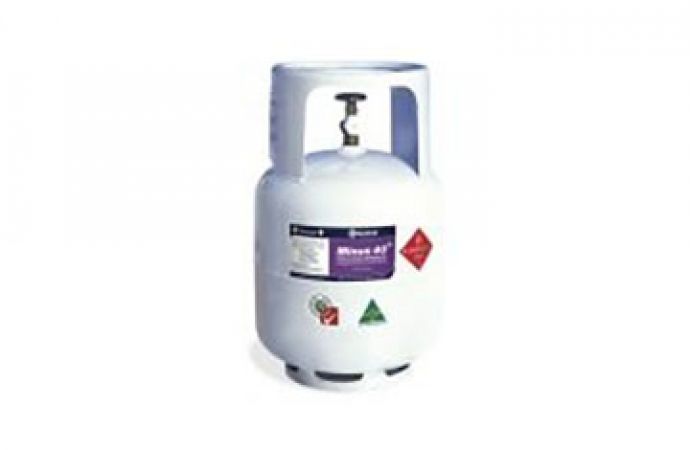Eight propane chillers have been installed at The Co-operative Group’s new headquarters in Manchester, the largest ever propane chiller project in a commercial building in the UK. The building has achieved the highest BREEAM rating, receiving the ‘Outstanding’ accreditation for a large, commercial building in the UK.

The installation of the eight 650kW propane chillers at The Co-operative Group’s new headquarter building in Manchester, completed in 2012, paves the way for a greater use of hydrocarbon chillers that would otherwise have used ammonia or HFCs.
Co-op hydrocarbon chillers deliver cooling output of 3,600 kW
The eight 650kW water-cooled water chillers using hydrocarbon refrigerant R290 (propane) provide comfort air conditioning for the building. The hydrocarbon chillers are part of the new Industrial Frigo Hydrocarbon Series (GP) range, designed within the constraints of the EU’s Best Available Technology (BAT) protocol. They comprise the first set of water-cooled chillers operating on hydrocarbon refrigerants to deliver very large cooling outputs of up to 3,600kW.
This project proves once again that larger hydrocarbon chillers can be used safely in the urban environment. Since commissioning, the chiller has been completely uneventful, providing reliable cooling and achieving the predicted energy efficiency. The use of our machines in meeting the required SEER or COP 5.56 and helping to achieve the highest ever UK BREAM and POL 2 requirements for the building, proves the commercial viability of our Industrial Hydro-chiller range”, said William Thompson, Managing Director of F T Refrigeration.
The chiller specifications were provided by S I Seely & Buro Happold consulting engineers, designed by F T Refrigeration Ltd, and manufactured by Italian company Industrial Frigo. The installation was carried out by Rotary NW.
R290 chillers minimise environmental impact and optimise energy efficiency
Through the use of hydrocarbon refrigerant R290, instead of the more traditionally used R22 or R407c, the chiller’s global warming impact is minimised (R290 has a global warming potential (GWP) of 3 compared to 1300 for R407c or 1200 for R22). In addition, the chiller’s indirect emissions related to the energy use of the system are minimised through a series of features, which achieve potential energy savings in excess of 50%.
More specifically, the energy efficiency measures of the hydrocarbon chiller include:
- Favourable thermodynamic characteristics of R290 as a refrigerant
- Use of subcooling circuits improve the coefficient of performance (COP)
- Floating head pressure control that allows the condensing temperature to float as low as 20°C if ambient conditions allow, instead of the normal 40°C
- Electronic expansion valves
- Compressor variable capacity control
- Floating temperature set point + 6 to +18°C
- BMS integrated control system with Bacnet
- Fully welded pipework reducing potential refrigerant leakage
- Integral refrigerant containment system with automatic detection
Hydrocarbon chillers: potential cost-benefit solutions for commercial buildings
According to the Bill Wilson, refrigeration engineering manager of The Co-operative, according to the project life cycle cost analysis, the chiller’s COP amounts to 5.56 compared to a value of 2.82 for an HFC134a chiller. Assuming energy costs of 0.070 £/KWh and given capital cost differences between the two systems, an estimated £135,000 can be saved after running the system for 10 years.
According to Industrial Frigo, mass production allows hydrocarbons chillers to be produced for a premium of less than 10% over HFC chillers, while the company believes that there will be increased demand for this type of solution as, until now, specifiers and users of screw compressor chillers have been restricted to choosing between expensive ammonia chillers or HFC chillers.
Highest ever UK BREAM rating for a commercial building
BREEAM ‘Outstanding’ accreditation was achieved at the design stage and with an expected final score of 94%, which is the highest ever rating for a large, commercial building in the UK.
Assessment undertaken during construction ensured the building received an A rated Energy Performance Certificate and Display Energy Certificate. This makes it the first building in the UK to achieve all three accreditations at this level.
MORE INFORMATION
Related stories















_1490973133.png)


